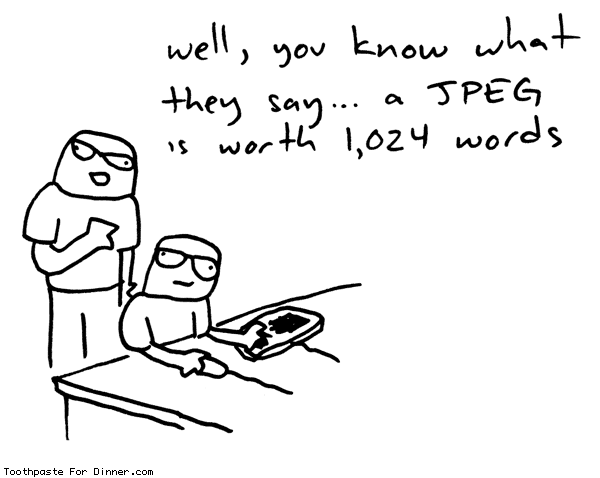Feb 22nd, 2011
Chapter 6: Visual Storytelling with Photographs
We’ve all heard the expression “A picture is worth a thousand words.”
Mark Briggs says, “Thanks to digital photography, words can easily be replaced with images, improving the experience for the audience and improving the efficiency of the journalist.”

Copyright: toothpastefordinner.com
Digital photography has become the norm in our culture. Digital photos are captured and expressed in pixels. Pixel is short for PICTure ELement. A pixel, according to Briggs, is the “visual representation of data in a digital image or graphic.”
Resolution is how many pixels are in any given picture.
Basic camera functions:
- Camera modes: controls shutter speed.
- Zoom: closeness to the object being pictured.
- Flash: give light to a photo, remove red eye.
- View/delete: see your pictures and remove ones you don’t want.
According to Briggs, these are a few good steps to follow when getting an image ready for online publishing:
- Edit a copy of the photo — never the original.
- Crop the photo.
- Resize the picture.
- Modify the resolution.
- Tone and color correct the picture.
- Save a Web version.
- Keep it simple.
In conclusion, photography is a CRITICAL tool for us as young journalists and we must aspire to shoot, shoot, shoot! Pictures, that is. They are, after all, worth 1,000 words.


